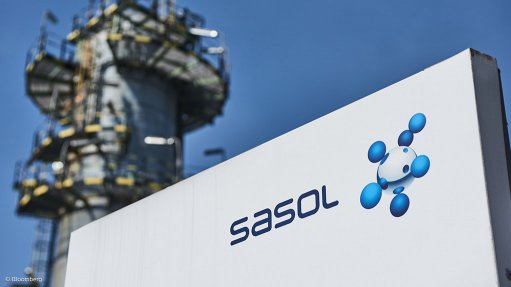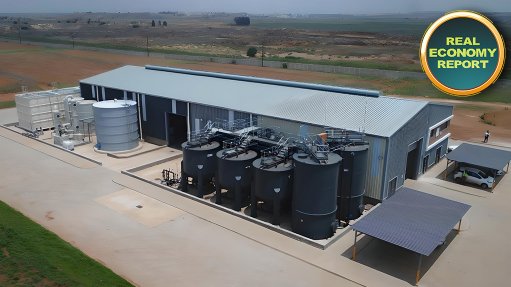Reflections on expanded BRICS
Please – ‘b’, a consonant – ‘r’, a vowel - ‘i’, a consonant – ‘c’, a vowel – ‘s’, a vowel – 'i’, a consonant – ‘s’, a vowel – ‘u’, a vowel – ‘e’, a vowel – ‘a’, and a vowel – ‘e’, which displays as ‘bricsisueae’. It would have been if you were a contestant on the long-running British gameshow Countdown. One of the word challenges is for contestants to select nine consonants and vowels and then, within 60 seconds, to devise a word.
Your challenge (you could read ‘mission’), should you choose to accept it, is to use the 11 letters and devise an acronym.
While you are contemplating, I am reminded of March 29 to 31, 1995. On March 1, I had joined the Chamber of Commerce and Industry and on Sunday, March 26, I was off to Grand Bay, Mauritius, as one of the business representatives of the inaugural tripartite (government, business and academic) meeting of the Indian Ocean Rim Initiative, which was to become the Indian Ocean Rim Association for Regional Cooperation, or the IOR-ARC for short, which was formally launched on March 6, 1997.
The idea had taken root during a visit to India in November 1993 by the then South African Foreign Minister, Pik Botha, and subsequently cemented in January 1995, when then President Nelson Mandela visited India.
At the time, the three core ‘founding’ members were India, Australia and South Africa, which were referred to as the ‘golden triangle’. What is it that bound these countries together, and what were the criteria for membership? Well, for this you will need to get your feet wet, as it were – these are countries “whose shores are washed by the Indian Ocean”. But there are those which are not – remember that for later.
If you have a preference for marketing material, here is what one says: “As the third-largest ocean woven together by trade routes, commands control of major sea-lanes carrying half of the world’s container ships, one-third of the world’s bulk cargo traffic and two thirds of the world’s oil shipments, the Indian Ocean remains an important lifeline to international trade and transport. Home to nearly 2.7-billion people, member States whose shores are washed by the ocean are rich in cultural diversity and richness in languages, religions, traditions, arts and cuisines.”
The 23 members are Australia, Bangladesh, Comoros, France, India, Indonesia, Iran, Kenya, Madagascar, Malaysia, Maldives, Mauritius, Mozambique, Oman, Seychelles, Singapore, Somalia, South Africa, Sri Lanka, Tanzania, Thailand, the United Arab Emirates (UAE) and Yemen. Moreover, there are ten dialogue partners, namely Egypt, Germany, Italy, Japan, Russia, South Korea, China, Turkey, the UK and the US.
So, have you come up with a suitable acronym for ‘bricsisueae’? There is ‘brics’ in it and ‘isueae’ as well. As for its origin, the current BRICS members are Brazil, Russia, India, China and South Africa, with another six members set to join on January 1, 2024. At the conclusion of the XV BRICS Summit, held in Johannesburg from August 22 to 24, it was decided to admit Iran, Saudi Arabia, the UAE, Egypt, Argentina and Ethiopia.
When comparing the membership of the IOR-ARC and BRICS, the overlapping membership is quite obvious. But the quantifiable trade and investment benefits that South Africa will derive from its membership of these supposed ‘trade blocs’ is not quite obvious.
As for size, it is indisputable that the five BRICS members account for 40% of the global population and a quarter of the global gross domestic product. But how this size translates to economic benefit is quite another matter. But then the real driving force behind the trade bloc might well be political in nature.
Possibly the hidden news item of the summit was the launch of a working group to study a potential reference currency for trade. If you need reminding, a reference currency is considered to be the primary investment legal tender used to carry out all foreign bank transactions for a specific exchange rate. At present, the reserve currency is the US dollar.
Comments
Press Office
Announcements
What's On
Subscribe to improve your user experience...
Option 1 (equivalent of R125 a month):
Receive a weekly copy of Creamer Media's Engineering News & Mining Weekly magazine
(print copy for those in South Africa and e-magazine for those outside of South Africa)
Receive daily email newsletters
Access to full search results
Access archive of magazine back copies
Access to Projects in Progress
Access to ONE Research Report of your choice in PDF format
Option 2 (equivalent of R375 a month):
All benefits from Option 1
PLUS
Access to Creamer Media's Research Channel Africa for ALL Research Reports, in PDF format, on various industrial and mining sectors
including Electricity; Water; Energy Transition; Hydrogen; Roads, Rail and Ports; Coal; Gold; Platinum; Battery Metals; etc.
Already a subscriber?
Forgotten your password?
Receive weekly copy of Creamer Media's Engineering News & Mining Weekly magazine (print copy for those in South Africa and e-magazine for those outside of South Africa)
➕
Recieve daily email newsletters
➕
Access to full search results
➕
Access archive of magazine back copies
➕
Access to Projects in Progress
➕
Access to ONE Research Report of your choice in PDF format
RESEARCH CHANNEL AFRICA
R4500 (equivalent of R375 a month)
SUBSCRIBEAll benefits from Option 1
➕
Access to Creamer Media's Research Channel Africa for ALL Research Reports on various industrial and mining sectors, in PDF format, including on:
Electricity
➕
Water
➕
Energy Transition
➕
Hydrogen
➕
Roads, Rail and Ports
➕
Coal
➕
Gold
➕
Platinum
➕
Battery Metals
➕
etc.
Receive all benefits from Option 1 or Option 2 delivered to numerous people at your company
➕
Multiple User names and Passwords for simultaneous log-ins
➕
Intranet integration access to all in your organisation

















